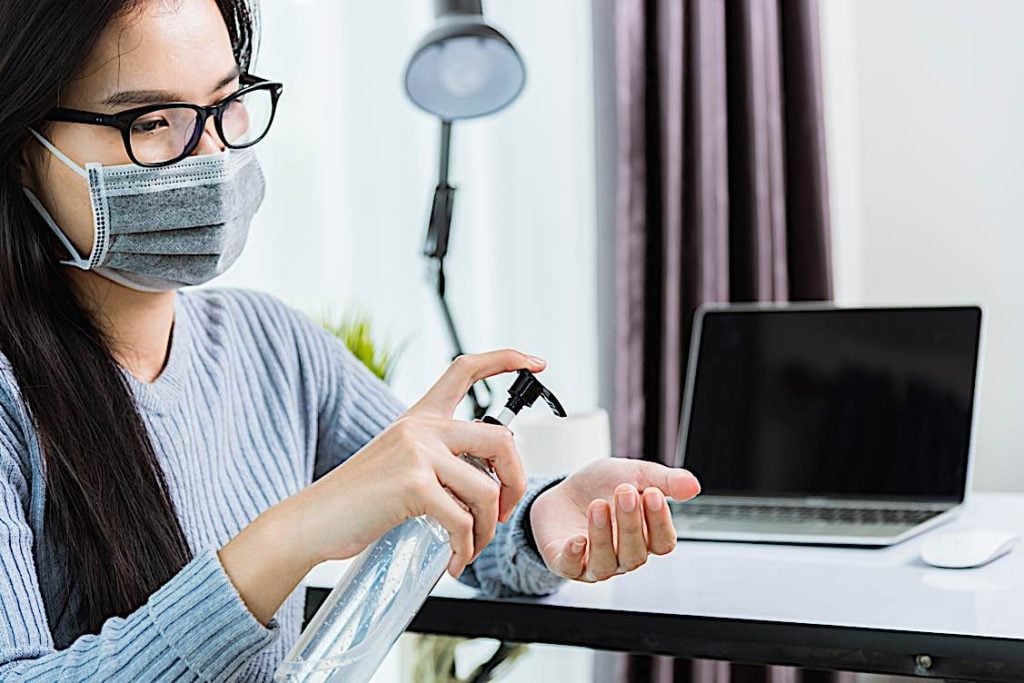
Are you HR-ready for the second wave of COVID-19? Check with our ten-point checklist
To find out if you’re ready for the expected second wave of Covid-19 — which some health experts say is already a reality — below is our ten-point checklist to help you manage your human resources in this challenging scenario.
The majority of HR Managers are not yet HR-ready for the expected “second wave” of Covid-19. In Canada, there are indications this new wave has begun. With the double hit of Coronavirus and seasonal flu, HR managers are likely to be working overtime managing this unprecedented challenge, balancing the often contradictory demands of “safe workplace” and “HR productivity.” With the economic impact of the pandemic hurting many businesses, efficient HR, balancing efficiency with safety, is one way to make a bottom-line difference.
Do you need help managing your HR team in difficult times? Are you ready with an HR safety plan and schedule for the anticipated second wave of Covid-19? Contact the experts at Pivotal HR Solutions.
-
Risk Assessment
You’ve conducted a risk assessment for safety — right? If you haven’t, you may have legal as well as financial risks to weigh.
- If you manage a team of 50 or more, you face a high-risk scenario for both safety and liability. – 15-50 would be considered a moderate-high risk.
- 5-15 team-members in one office environment — depending on factors such as shared spaces — might be a moderate risk.
- 1-5 team-members low risk.
How to assess risk?
– Identify the hazards based on current guidelines — distancing requirements, cleaning schedules, and other factors.
– Who is at the highest risk? Based on space and team-size and other factors — such as shared surfaces — identify who in your team is at the highest risk.
-
Rotations and Schedules
HR Managers can play a significant role in mitigation by implementing a rotating schedule that minimizes density in offices. This can include:
- How many team-members can efficiently work from home, reducing office density.
- Consider rotations and shifts. If shifts aren’t an option, try rotating home and office workers — one week at home, one week in the office, for example. By doing this for half of your team, you reduce density in the office, reducing risks.
- Even for teams working in the office, consider virtual meetings. Otherwise, for in-person meetings, follow social distancing guidelines.
-
Update employee handbooks and rules
It is critical to take away the “guessing” in terms of your health rules or guidance. Even if current government guidelines provide rules, it’s essential to be clear on your expectations as an employer.
-
Provide complimentary masks and hand sanitizer
In addition to other cleaning supplies and cleaning services for public areas, consider supporting your team’s healthy habits with company-provided protection.
-
Clarity for visitors and team-members
Post clarity statements and change phone messaging systems — and websites — to reflect your revised policy for visitors. Who can visit, under what circumstances, and what rules must they follow.
-
Consider commuting plans
To avoid the stress of public transit, where home-working is not viable, consider scheduling teams to avoid the rush hour times on public transit. Consider supporting alternatives for public transit, such as paying for employee parking to encourage driving — on a temporary basis.
-
What’s your response plan to a positive test of a team-member?
Don’t wait until it happens. What’s your HR plan and contingencies for a positive test with an employee who has been attending the office? Have you communicated it to your team?
Steps might include:
- Asking your employee to go home right away and stay home even if there are no symptoms until cleared.
- Investigate all public areas the positively-tested employee visited and arrange for disinfectant cleaning.
- Clean all door handles, elevator buttons, desks, chairs, coffee machines, lunch counters, public washrooms, and computers/phones.
- Follow up to ensure Public Health is informed for immediate contact tracing — and to help them monitor your employee’s self-isolation.
- Communicate the issue with other team members, without sharing names or personal details. You must always inform your team if there has been a positive COVID-19 case in your workplace. Ask the team to self-monitor and follow your written guidelines (see #3 above.)
- Make sure the employee receives treatment and is cleared before returning.
- Offer to counsel to any team members who need help.
- Pro-actively and immediately, contact Public Health.
-
Optimize your workplace
Regardless of cost — remembering that HR costs are always higher than safety protocols — re-arrange office furniture to maximize social distancing. Consider signage and posts to remind team-members or your health guidelines. Place sanitizer and free masks (individually wrapped) in public areas. Follow all government recommendations. Stockpile sufficient PPE and cleaning supplies.
-
Increase cleaning frequency
In retail or work environments with high-traffic public visitors, implement proper guidelines. Regardless of the environment, increase the “wipe-down” frequency of public surfaces with disinfectants.
-
Have a lockdown plan ready
In the event of a phased or complete lockdown, have a plan ready to minimize disruption to your workflow and minimize stress for your team.
Do you need help managing your HR team in difficult times? Are you ready with an HR safety plan and schedule for the anticipated second wave of Covid-19? Contact the experts at Pivotal HR Solutions:
Contact Pivotal


 Our HR solutions experts can recommend the right mix of HR outsourced services to make your entry into Canada easier.
Our HR solutions experts can recommend the right mix of HR outsourced services to make your entry into Canada easier.  Pivotal Employment Management Services co-hires your workforce, simplifying entry of your business in Canada.
Pivotal Employment Management Services co-hires your workforce, simplifying entry of your business in Canada. 
















REAL HR!